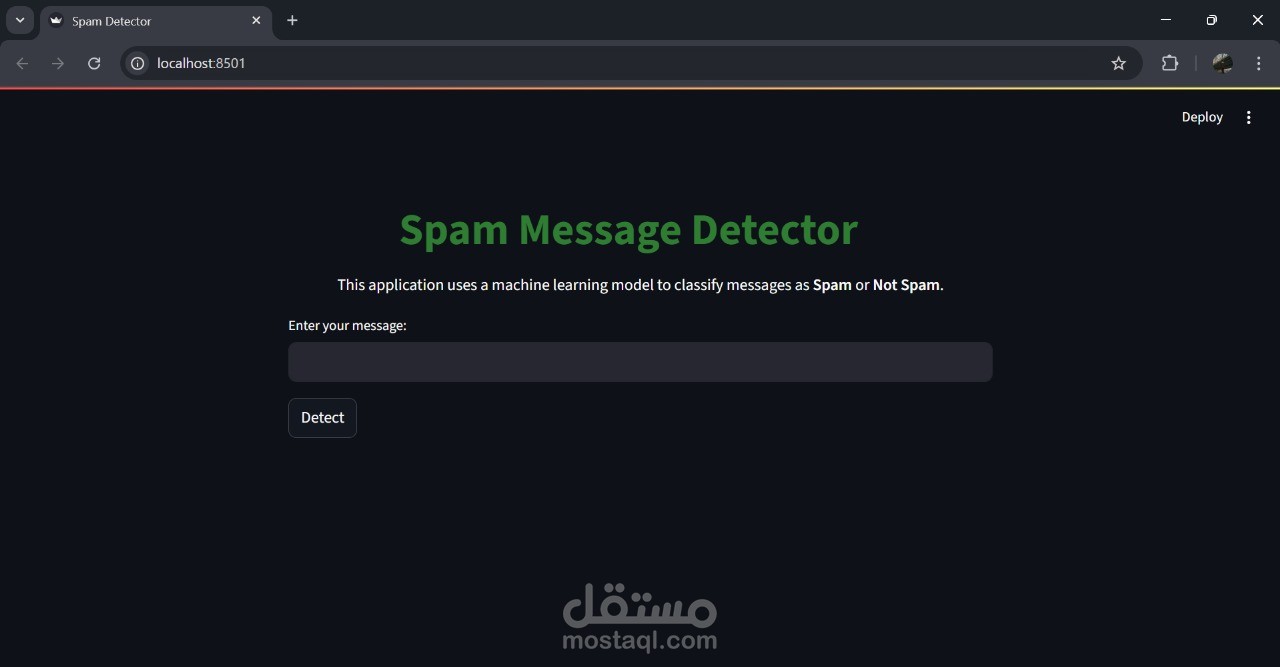نظام ذكي يساعد علي الحمايه من الرسال الضاره في البريد
تفاصيل العمل
Spam Email Classification Project
This repository contains a Jupyter Notebook for classifying SMS or email messages as spam or ham (non-spam) using classic machine learning and natural language processing techniques. The notebook includes the full pipeline from data loading and cleaning to feature engineering, model training, hyperparameter tuning, resampling for class imbalance, ensemble modeling, and evaluation.
The dataset used is the SMS Spam Collection Dataset from the UCI Machine Learning Repository. It contains labeled text messages as either ham or spam.
Main steps in the notebook:
Data loading and initial exploration
Data cleaning (deduplication, label encoding)
Exploratory Data Analysis (EDA) with count plots and pie charts
Text preprocessing using NLTK (tokenization, sentence/word/character counts)
Feature extraction with CountVectorizer
Train/test splitting
Model benchmarking with LazyPredict
Hyperparameter tuning using GridSearchCV (BernoulliNB)
Addressing class imbalance with RandomUnderSampler
Model evaluation using confusion matrix, classification report, accuracy, precision, recall, F1-score, ROC curve, and AUC
Ensemble modeling with VotingClassifier (combining Decision Tree, BernoulliNB, RandomForest)
Best results achieved with BernoulliNB (after RandomUnderSampler):
Accuracy: ~98.65%
F1-score: ~95.21%
Precision: ~97.20%
Recall: ~93.29%
Requirements:
Python 3.x
Jupyter Notebook
pandas
numpy
matplotlib
seaborn
scikit-learn
nltk
lazypredict
xgboost
imbalanced-learn
Install dependencies:
pip install pandas numpy matplotlib seaborn scikit-learn nltk lazypredict xgboost imbalanced-learn
How to run:
Clone the repository
Install the requirements
Open the notebook in Jupyter
Run all cells to reproduce results
License: MIT
Acknowledgements: UCI Machine Learning Repository for the dataset, scikit-learn, NLTK, LazyPredict, XGBoost

